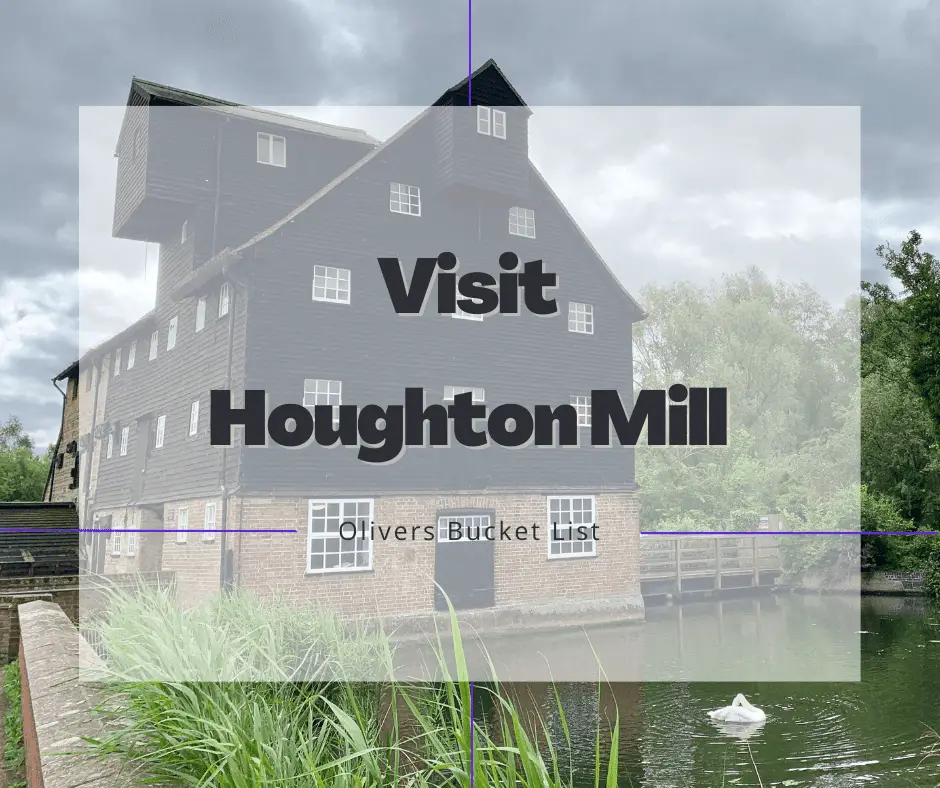A vist to Houghton Mill is the next property on my bucket list to visit every National Trust property. Houghton Mill is the sixth property that I have now completed on that list. I now very close to completing all of the properties in Cambridgeshire, I only have Wicken Fen left to visit to complete that part of the list.
History of Houghton Mill
There has been a mill on the river where Houghton Mill is now as far back as 974. It was created by the monastery that was nearby at Ramsey. The farmers that farmed the land which was owned by the monastery were forced to use Houghton mill to mill their wheat. A portion of which was then taken by Ramsey Monastery. In the 1500s the abbot of the monastery wanted to increase what the mill could process so he had a river diverted to increase the power of the mill. This did have the effect of flooding a nearby village.
During the dissolution of the monasteries in the 1530s ownership of the mill was taken from Ramsey monastery and given to the crown. The mill that is on the site today is one that was rebuilt in the 17th century after its predecessor was burned down after catching fire. The building was extended in the 19th century the mill is now three stories high as is made from a mixture of bricks and wood.
In the 1930s the mill was closed down due to bigger and more efficient mills being built closer to the sea where big ships were able to reach easily. Hoping to save the building the residents of the local village got together and managed to collect enough money to purchase the mill and give it to the National Trust. Between 1935 and 1983 Houghton Mill was used as a youth hostel. After 1983 the trust deiced to open the mill up to visitors. They added new millstones in 1999 which are still used to this day to mill the flour that is able to be purchased in the little gift shop.
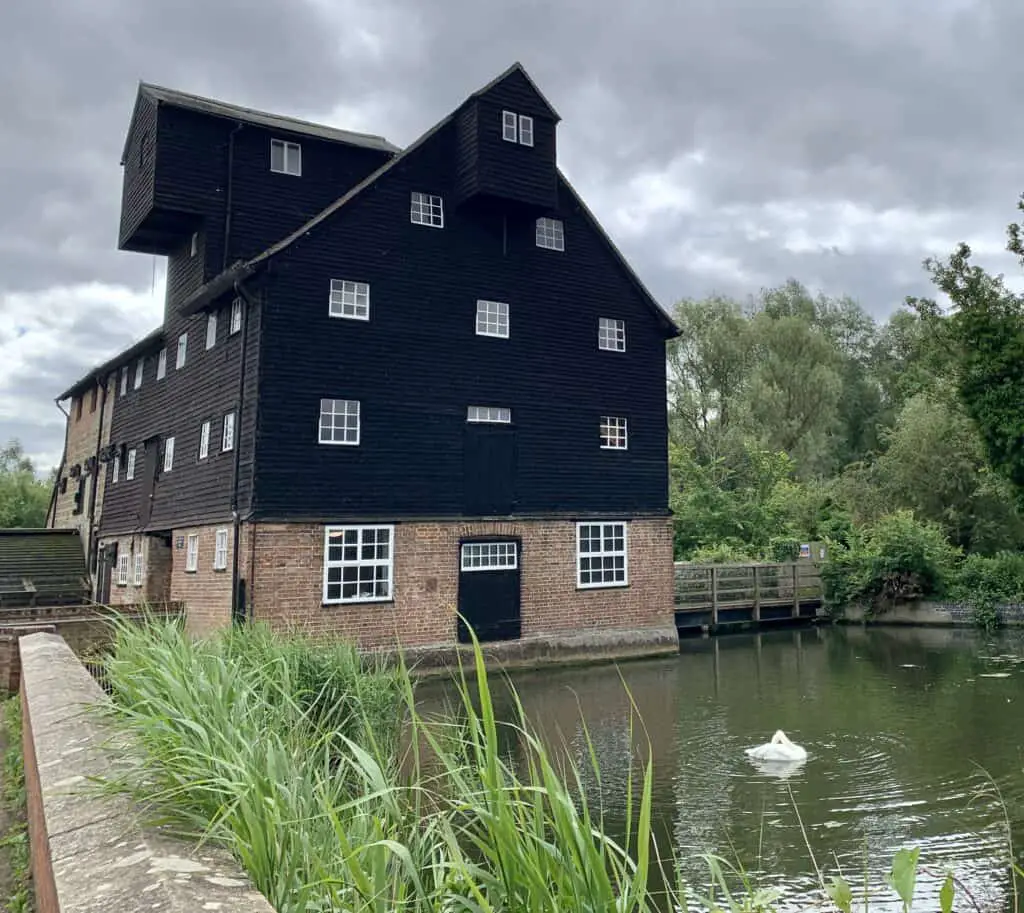
My visit to Houghton Mill
Getting to Houghton Mill is relatively easy, the entrance is at the end of the village down a small lane. There is parking onsite however the number of spaces are rather limited. I would estimate the number of places at around 20-30 depending on how people park there. You do have to pay for parking in this car park if you are not a National Trust member. It costs £3 for three hours. National Trust members can park here for free for the first three hours. To do that you need to scan your membership card at the machine where you pay for the car park. It will then print off a ticket for you that you display in the window of your car.
There are some nice meadows that you can walk in or take a stroll along the side of the river. As I was there early I took a stroll out the other side of the mill past the river lock and along the path that is next to the river. It was so peacefully and sunny there a nice way to while away the time.
Currently you are not able to go inside Houghton Mill unless you have a place booked on a tour run by National Trust volunteers. There are only two days too choose from they are Wednesdays or Saturdays. There are a few different time slots on each day that are available starting at 11:00 and running all the way to 16:00. If you have the choice I would pick tours that are ran on a Saturday as on that day the mill is actually working while I Wednesday the water wheel and the insides are not.
The meeting point for the tours is a little office to the side of the little tunnel that runs through the middle of the mill. The tour guides are all volunteers the millers are also volunteers but they are only there on a Saturday. Once the group is ready we head outside to get a bit of history of the mill. I find that having a guide does make it more immersive compared to just reading text on a sign. The tour winds its way up and down the inside of the mill. You get to see an area that was used by the YMCA when it was used as a youth hostel. Then the tour moves onto the actual part of the mill that is used to mill the flour. The stones and all of the equipment that drives it some of which is many hundreds of years old. Back in the day this mill would have been very noisy and very dusty and a very high risk of fire/explosions. Working here did reduce the life expectancy of the employees, but the work was well paid and it was inside so there was always people willing to work there.
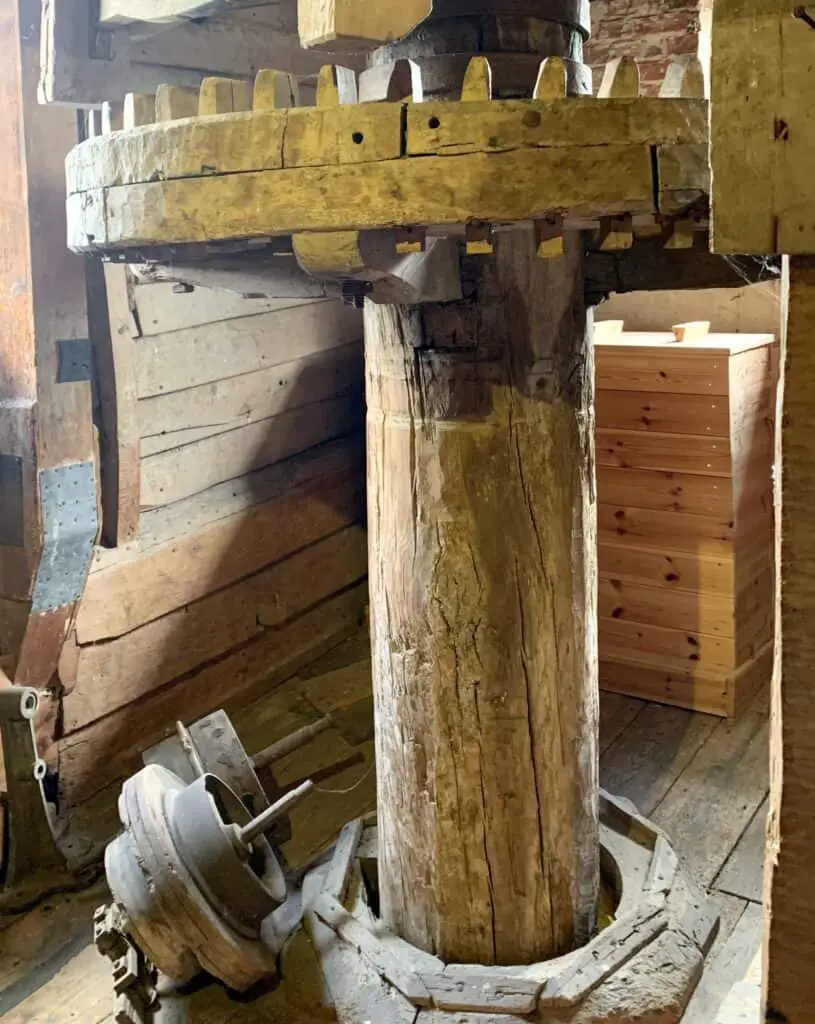
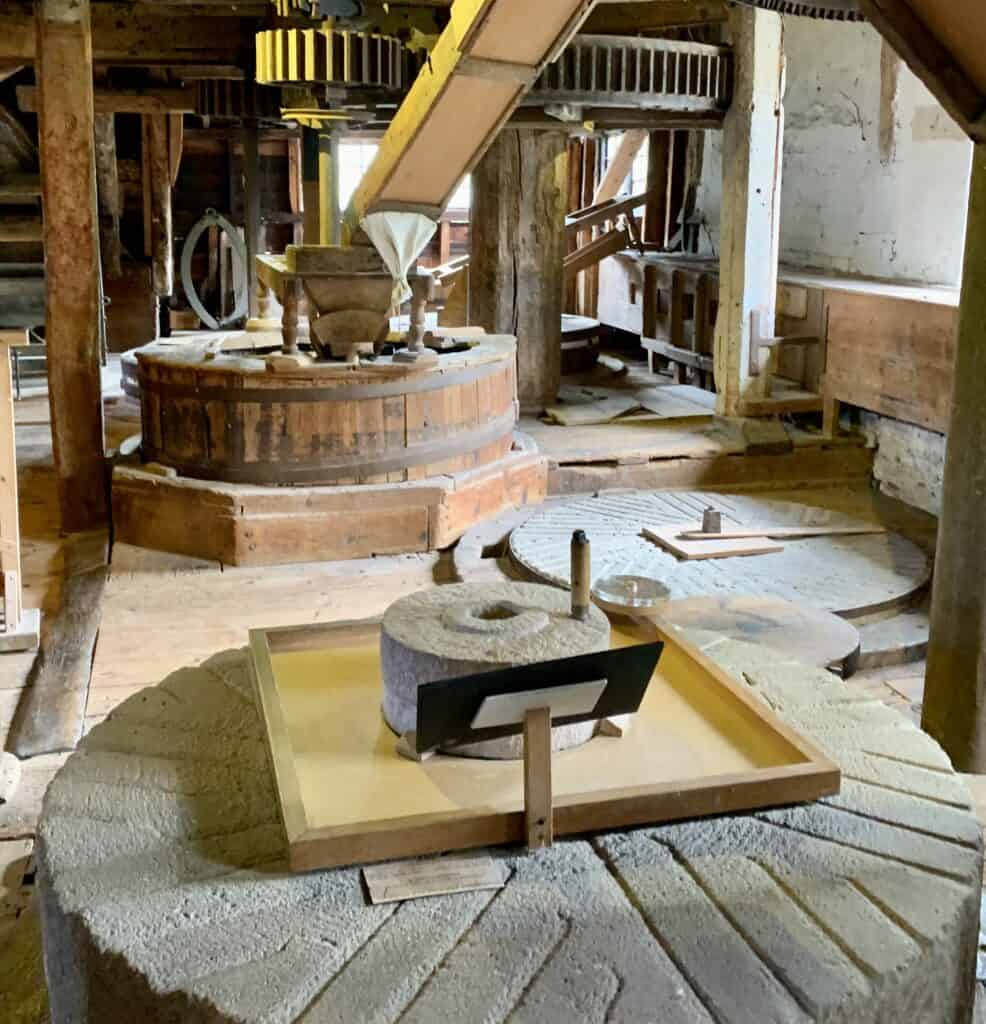
The tour ends back on the ground floor where you can purchase a bag a flour that was milled on site. There is also a few other Houghton Mill related items that you can purchase from the little shop before you leave.
The tour lasts for about and hour with plenty of time for you to wander and look at things for yourself before the tour moves onto the next area. There is some climbing of stairs and uneven floors in places so you need to be able to move around ok.
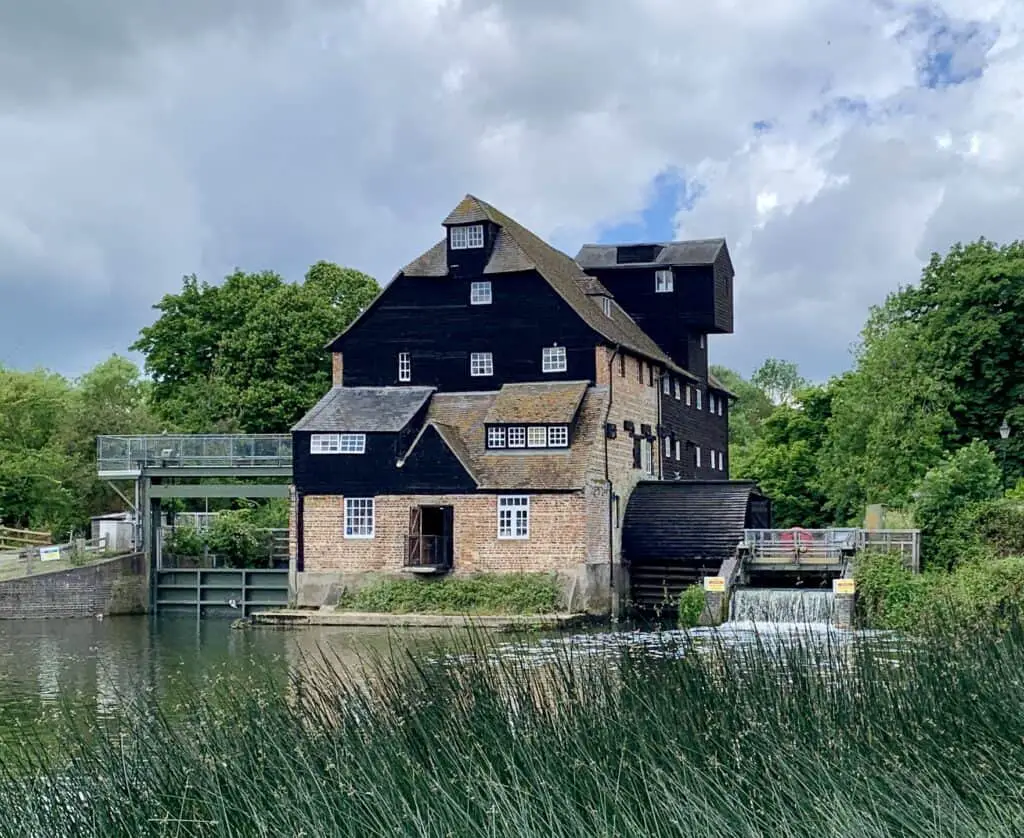
Useful Information
Getting to Houghton Mill
- Latitude: 52.330833
- Longitude: -0.120833
- Postcode: PE28 2AZ
Entrance
Houghton Mill is well signposted once you are in the village. It is located at the end of small lane. There is a small car park next to the camping site, there is perhaps 20 parking spaces. This car park is one of the ones that you need to pay for if you are not a National Trust member. National Trust members can park here for free however you need to go to the parking machine and validate your membership card. Once membership is validated the machine will give you a parking ticket that lasts for three hours for free.
Opening Times
The inside of the mill is only open on Wednesdays and Saturdays. It is also only open to those that are on a pre-booked tour, they don’t allow people to walk in. Saturdays would be the best of the two days to visit as on that day the millers are there and the waterwheel is in use. You can book your tickets here.
Facilities
- Gift shop
- Cafe
- Picnic area
- Guided Tours

